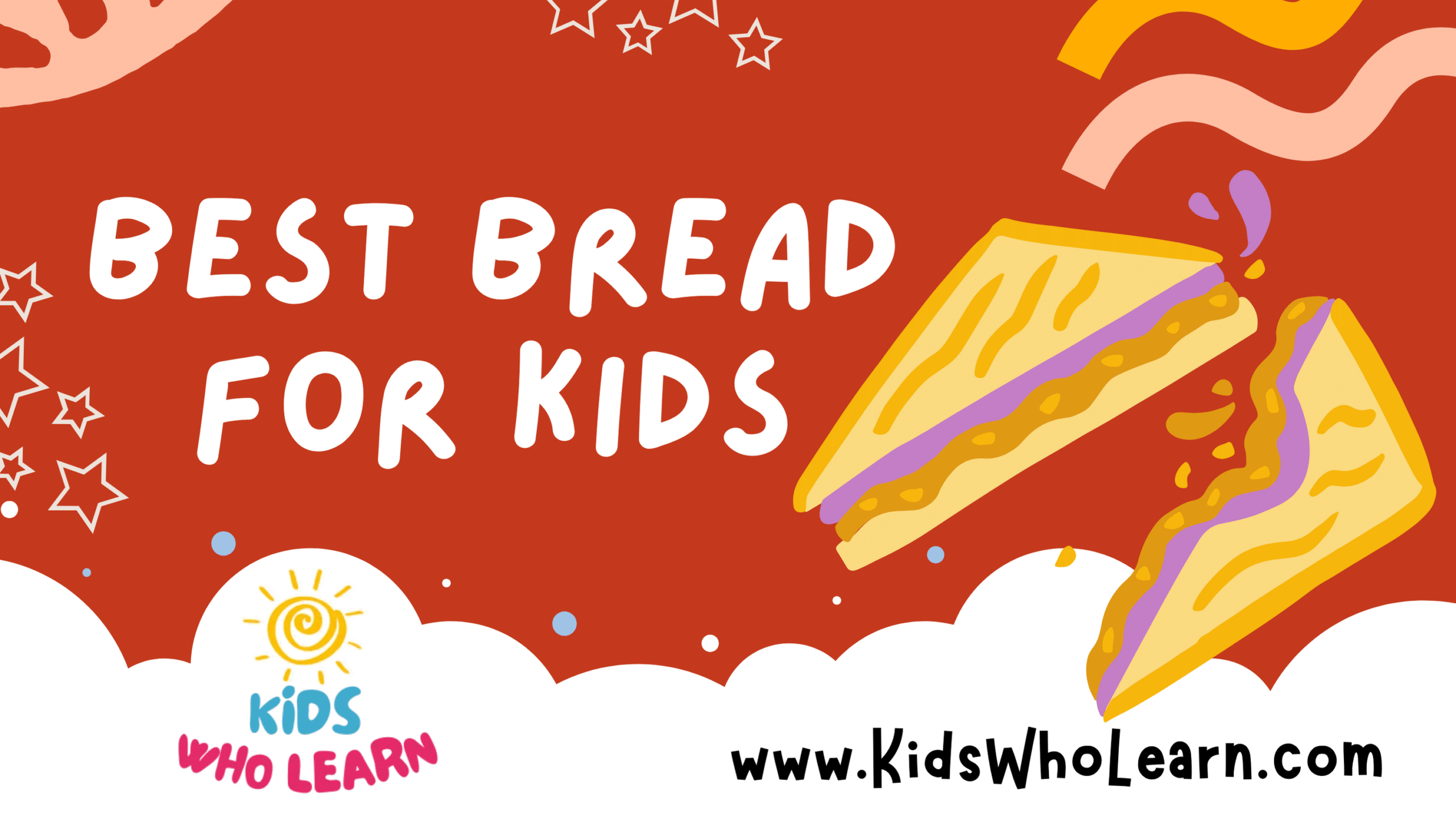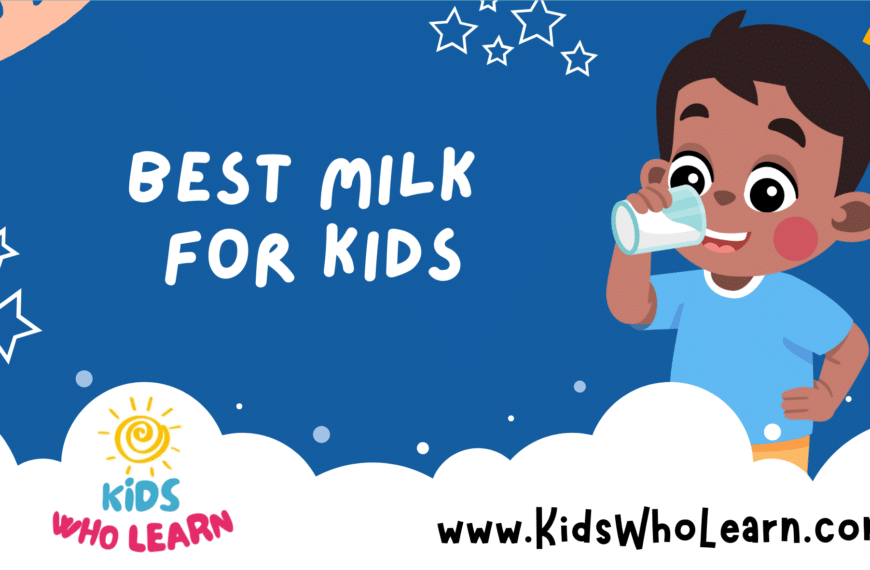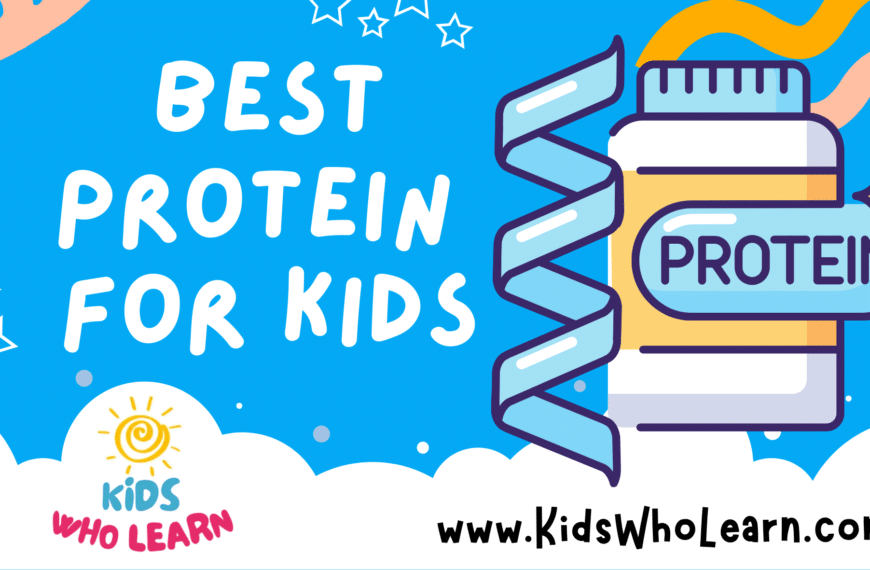Choosing the best bread for kids can be a subtle but important decision for their health and enjoyment. We understand that as a staple in many family diets, bread comes in various forms, each with its unique taste and nutritional profile. Our growing children have specific nutritional needs, and we must be thoughtful about the types of bread we introduce into their diets. Some breads are packed with whole grains and fibers that are beneficial for their development, while others might be more processed with added sugars, which are less desirable.
We also recognize that each child’s preference plays a big role in what constitutes the ‘best’ bread. It’s not solely about the bread being wholesome and nutritious; if it isn’t appealing to the kids, they won’t eat it. Therefore, finding a balance between health benefits and palatability is key. We also aim to provide practical tips for selecting and even preparing bread that will not only nourish our children but also delight their taste buds. From the bread aisle to the kitchen, we equip ourselves with knowledge to make informed choices.
Key Takeaways
- Identifying nutritious and appealing bread options for kids is crucial.
- Children’s preferences influence the selection of the best bread.
- Balance between health benefits and taste is vital in choosing bread for kids.
Understanding Bread Basics
In assessing the best breads for kids, we focus on the ingredients that go into them, the methods used to create them, and the variety available.
Ingredients Fundamentals
When we discuss bread ingredients, the fundamentals include flour, water, yeast, and salt. Flour provides the structure, water activates the yeast, yeast is responsible for fermentation, and salt adds flavor while regulating yeast activity. To make bread more appealing to kids, we might add a little sugar for sweetness. For health-conscious choices, whole grain flour is superior to white flour due to its nutrient profile.
- Flour: Whole grain, White
- Yeast: Active, Instant
- Additional Ingredients: Salt, Water, Sugar for taste
Bread-Making Process
The process of making bread is as integral as the ingredients. We first combine our ingredients to form dough. The dough must then rise, where the yeast ferments the sugars and releases carbon dioxide, giving the bread its porous texture. Baking requires precise temperatures; we typically preheat the oven to between 350°F (175°C) and 475°F (245°C), depending on the bread type. During this phase, the dough transforms into a delicious, edible loaf.
- Mixing: Combine ingredients to form dough.
- Rising/Fermentation: Allow dough to rise.
- Baking: Bake bread in a preheated oven.
Types of Bread
Bread comes in various types, each with unique characteristics. White bread is soft and mild, often favored by kids, but it’s not the most nutritious. Whole grain bread retains the entire grain, making it richer in nutrients and fiber. Sourdough bread has a tangy flavor and natural fermentation benefits. Quick breads bypass yeast in favor of leaveners like baking soda, making them fast to prepare. Sprouted grain bread, made from grains that have begun to sprout, is a dense and hearty option that’s also nutrient-rich.
- White Bread: Soft, mild flavor.
- Whole Grain Bread: Nutrient-dense, rich in fiber.
- Sourdough Bread: Tangy flavor, naturally fermented.
- Quick Bread: Fast, leavened without yeast.
- Sprouted Grain Bread: Made from sprouted grains, dense, nutrient-rich.
Nutritional Considerations for Children
When selecting the best bread for kids, it’s crucial to consider the nutritional content to ensure that we are providing them with healthful options that support their growth and development.
Whole Grains vs. Refined Grains
Whole grains are superior to refined grains for numerous reasons, especially when choosing bread for children. Whole wheat bread, for instance, is packed with complex carbohydrates, which are essential for sustained energy throughout the day. The presence of bran in whole grains contributes dietary fiber, which aids in digestion. Moreover, whole grains are rich in vital nutrients like iron and magnesium, which are crucial for a child’s development.
| Nutrient | Whole Grains | Refined Grains |
|---|---|---|
| Carbohydrates | Complex, slow-releasing | Simple, quick energy |
| Fiber | High (due to bran) | Low |
| Iron | Often higher concentrations | Lower quantities |
| Magnesium | Generally abundant | Often depleted |
Understanding Preservatives
Many breads contain preservatives to extend shelf life, but not all preservatives are equal. We must be vigilant about preservatives in bread and opt for those that are safe and minimally processed. Natural preservatives like vinegar are often a better choice for kids compared to artificial ones. As parents, we should read labels and select bread with the least amount of unnecessary additives.
Allergies and Dietary Restrictions
Dietary restrictions, whether due to allergies or intolerances, are paramount when choosing the best bread for kids. Those who are sensitive to milk should avoid bread that contains milk products. Additionally, there are gluten-free bread options for children with gluten intolerance or celiac disease. It’s our responsibility to ensure the bread we provide meets these dietary needs without compromising on nutrition.
| Dietary Restriction | Consideration |
|---|---|
| Milk Allergy | Avoid bread with milk or dairy by-products |
| Gluten Intolerance | Opt for gluten-free bread options |
Bread Selection for Kids
Selecting the right bread for kids is essential to cater to their taste preferences and ensure it fits into a balanced diet. We’ll explore preferred flavors and textures, along with the nutritional benefits of different types of bread.
Taste and Texture Preferences
When we consider bread for kids, it’s important to focus on the taste and texture. Children may favor soft and mildly sweet breads, such as classic sandwich bread or honey wheat, for both their pleasing flavor and easy chewability. Whole grain breads, while denser, can also be a good choice if they’re introduced early and incorporated into a variety of meals.
- Soft Texture: Whole wheat sandwich bread is often softer than other types and is easily accepted by kids.
- Mildly Sweet Flavor: Slight sweetness in bread, perhaps from a hint of honey, appeals to the young palate.
Bread as Part of a Balanced Diet
Bread, as a staple in our diets, must contribute to the overall nutrition of a child’s diet. Whole grain and whole wheat breads provide more nutrients and fiber than white bread and should be a family’s top choice for daily consumption. We must ensure the bread chosen is low in added sugars and oils, which can turn a healthy option into a less desirable one.
- Nutrient-Rich: Whole grains offer fiber, B vitamins, and minerals.
- Low in Additional Sugars/Oils: Bread should have minimal added sugars and oils to avoid unnecessary calorie intake.
As we provide these choices for our kids, we’re also setting a foundation for healthy eating habits that can last a lifetime.
Practical Bread-Making Tips
When we talk about making bread that is both delicious and suitable for kids, focusing on method and ingredients becomes fundamental. Quality and simplicity should guide us through the bread-making process to ensure our recipes are kid-friendly and healthful.
Home Baking Essentials
To begin our journey in bread-making, we need to gather the right tools and ingredients. Let’s start with what’s essential for any home baker:
- Ingredients: We recommend high-quality all-purpose flour, as it’s versatile and yields a soft texture ideal for kids. Always have salt, sugar, and yeast on hand, with the yeast being vital for a proper rise.
- Tools: Arm ourselves with a sturdy mixing bowl, a reliable oven, measuring cups and spoons, a loaf pan (or more, depending on the batch size), and a good wooden spoon or dough whisk.
- Warm Water: Warm water activates our yeast, so it should be around 110°F to 115°F. Too hot, and we risk killing the yeast, too cold, and our dough will rise sluggishly.
It’s beneficial to follow bread recipes from well-regarded cookbooks or videos by established bakers. Their insights guide us to avoid common pitfalls and improve our technique with each loaf we bake.
Kid-Friendly Bread Recipes
Kids are more likely to enjoy bread that has a soft texture and a neutral taste. Here are some practical tips for adapting bread recipes to suit younger palates:
- Simple Recipes: Start with a basic bread recipe that requires minimal ingredients. For a standard loaf of bread, we use about 3 to 4 cups of all-purpose flour, warm water to activate the yeast, a teaspoon of salt, and a little sugar to feed the yeast. This formula is simple, and the results are usually a hit with the kids.
- Baking Bread: When we bake bread from scratch, maintaining the ideal oven temperature—generally around 350°F to 375°F—is crucial. A preheated oven ensures a consistent baking environment, crucial for a perfectly baked loaf.
- Loaf Pan: Grease the loaf pan lightly to prevent sticking and achieve an even golden crust that kids will love.
For variety, consider adding child-friendly stir-ins like cinnamon or pureed fruits for a touch of natural sweetness. We aim for nutritive value and taste that caters to youngsters while also being substantial and satisfying for the whole family.
Frequently Asked Questions
We’ve compiled some common inquiries about the best bread options for children, focusing on health and nutrition.
What are the nutritional benefits of whole grain bread for children?
Whole grain bread provides essential nutrients for children, such as fiber, B vitamins, and minerals. These nutrients support healthy digestion and growth.
Why might health experts recommend brown over white bread for children’s sandwiches?
Brown bread, often made from whole grains, retains more natural nutrients and fiber than white bread, which has had these components largely removed during processing.
How does Dave’s Killer Bread rank in terms of healthiness for kids?
Dave’s Killer Bread is high in fiber and protein, and it’s organic, making it a healthy choice for kids. Additionally, it contains no artificial preservatives or high fructose corn syrup.
What factors should parents consider when choosing the healthiest sandwich bread for their children?
Parents should look for bread that is high in whole grains, fiber, and protein but low in added sugars and artificial ingredients. The fewer the ingredients, generally, the better.
Which bread options available at stores like Walmart are considered the healthiest for kids?
At stores like Walmart, parents can find healthy options like 100% whole wheat bread, sprouted grain bread, and brands like Ezekiel or Dave’s Killer Bread which are known for their nutrient-rich profiles.
How often should bread be included in a child’s diet for balanced nutrition?
Bread can be part of a child’s daily diet as long as it’s balanced with other nutrients such as fruits, vegetables, proteins, and healthy fats. Variety and moderation are key to a balanced diet.










